Welcome back! I hope everyone had a nice summer and was able to get outside and enjoy some fresh air after what felt like an extremely long winter.
Naturally, that’s a great segue to the Toronto Maple Leafs…
Training camp has officially started, and a new season is on the horizon.
It goes without saying at this point, but the pressure facing the Maple Leafs‘ core players, coaching staff, and management group is greater than it has ever been. They need to advance in the playoffs this season. It’s not hyperbole to suggest that jobs are on the line.
Adding to the tense situation is a disgruntled fanbase that probably won’t be forgetting about five straight first-round exits for the entire regular season. The team is also returning to a difficult division featuring several high-end teams.
The Leafs have a lot of questions to answer this season, and training camp should start providing us with some clues as to how they plan to approach the 2021-22 season.
Here are seven storylines to monitor over the next few weeks.
Will they spread out their talent to create three lines and some depth?
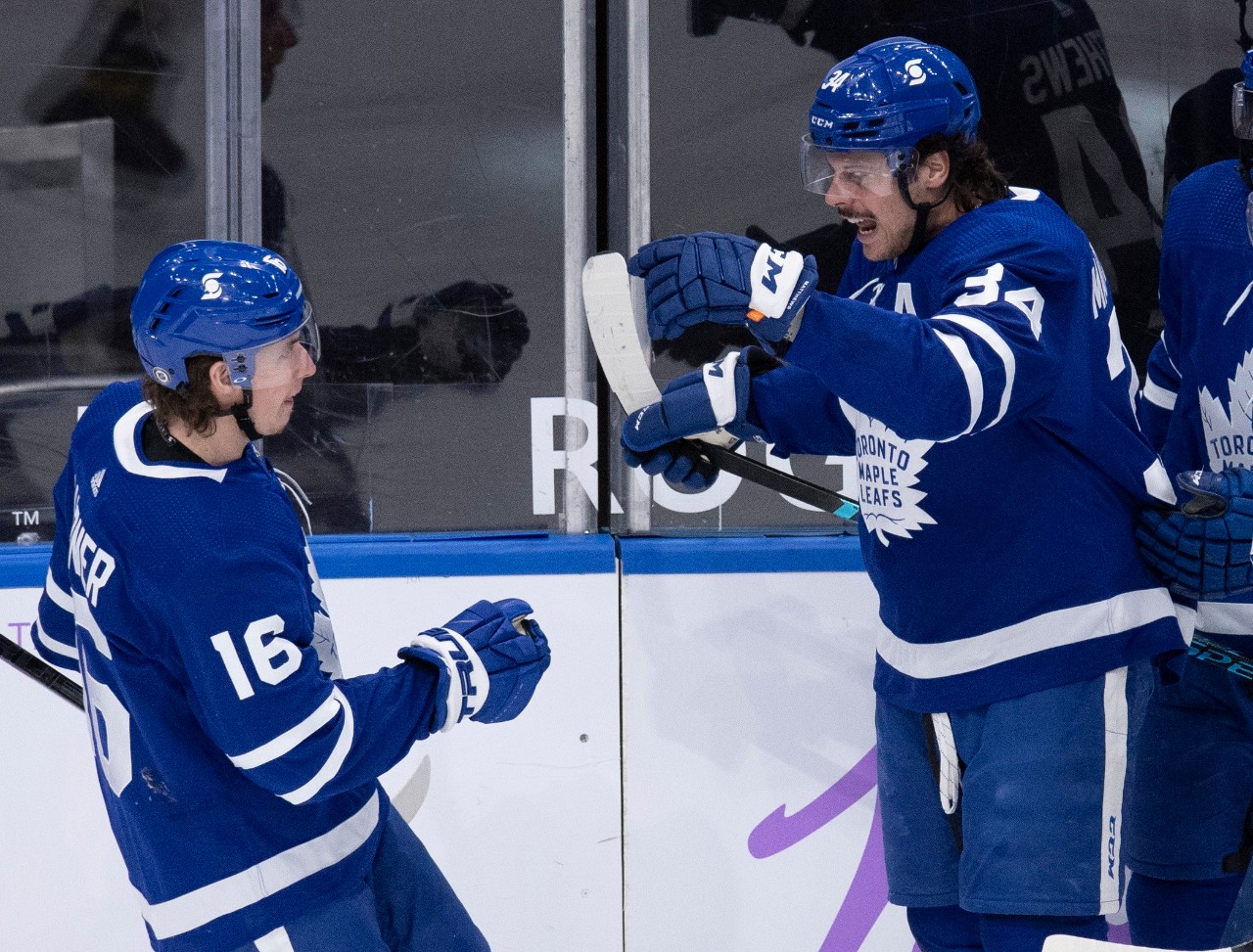
In the offseason, I did a deep dive on the lopsided Leafs’ forward ice-time distribution. In a nutshell, the Leafs are asking their top players to play more than any successful Cup team in the last 12-plus years. In the regular season, Mitch Marner led all forwards in the league in average time-on-ice per game, which still feels a little crazy to write. Is this upcoming season going to be more of the same?
The loss of Zach Hyman is particularly notable in this sense. Not only did he play a ton as well, but he gave the Leafs a credible winger to play heavy minutes on the top line against the opponents’ best. Nobody the Leafs signed this summer credibly gives them an option to replace him.
The new additions are fine gambles — and they will probably even hit on a signing or two — but it doesn’t make them options to play against the Bergeron line, Point line, or the Barkov line for 20+ minutes a night. To some degree, the Leafs’ coaching staff really should try to create three lines, and that means one of their top four forwards would have to play on a de facto third line of sorts.
In that sense, it’s almost strange to picture the Leafs loading up the top six when each of their top two lines would have a clear weak link. In the case of a first line playing 22+ a night, there would be a gigantic leap of faith with the player in this spot, who would be playing well above his head based on previous results (unless, maybe, Ondrej Kase actually stays healthy).
We know that Matthews and Tavares will be the top two centers. Will Marner and Nylander be attached to their hips the whole time, as they have been since Keefe took over the bench? Will they swap Marner and Nylander at any point? Dare we ask, will one of Marner/Nylander be given a line of their own to shape a three-line Leafs attack?
Who will play left wing alongside Matthews and Tavares?
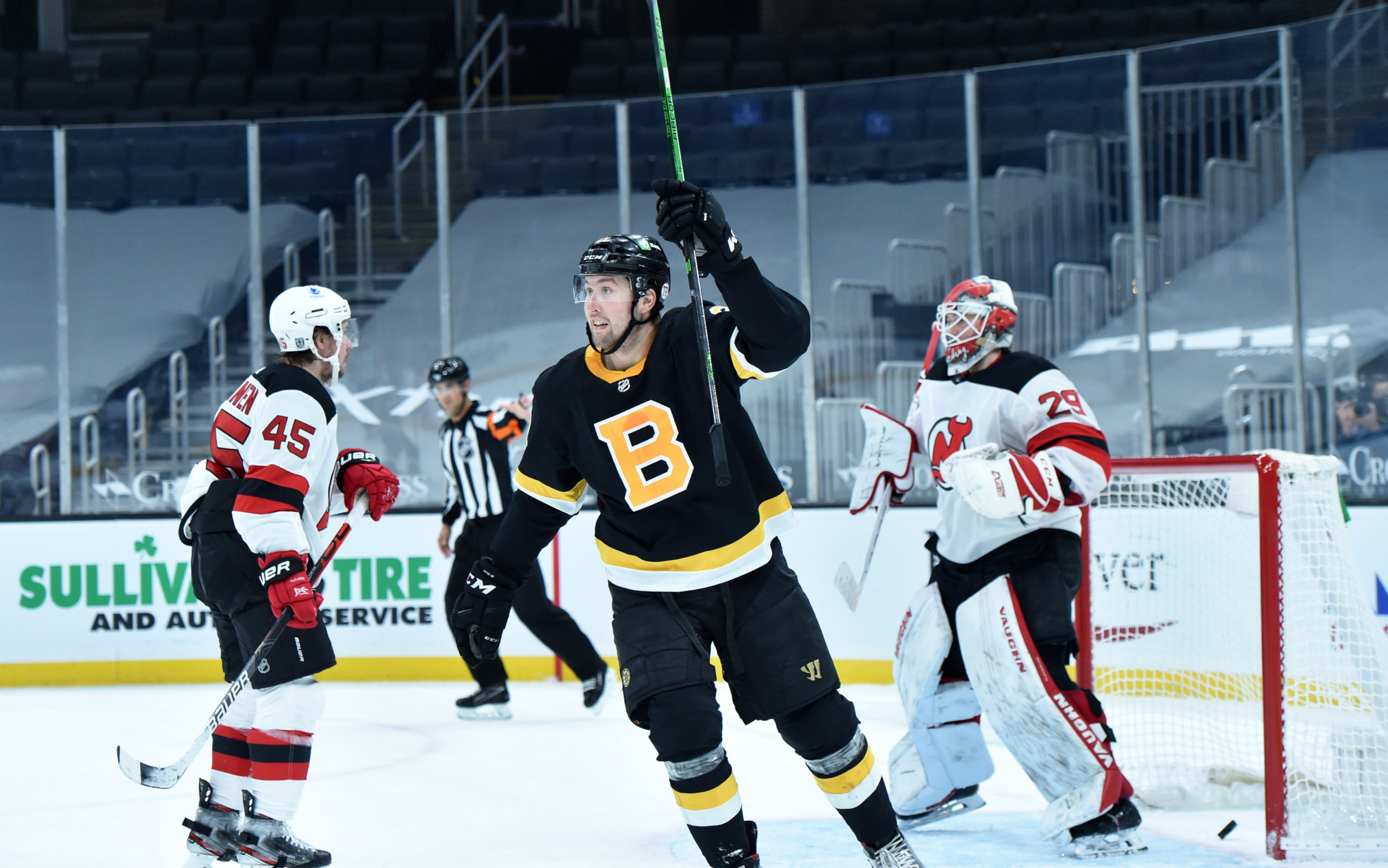
As we just noted, we know who the top two centers are pretty well no matter what. We have a rough idea of who the right wingers will be (Marner, Nylander, Kase, possibly Nikita Gusev, and maybe even Spezza is rewarded at some point).
The left wing is a completely different story. Nick Ritchie is in the mix and has a reasonable pedigree. Michael Bunting is intriguing, but he is 26 years old and has 26 NHL games to his name. Alex Kerfoot can slot there competently, but the Leafs might not have a suitable 3C if he does. Mikheyev can handle good minutes defensively, but he might not score enough to justify significant ice time alongside a top-end center. And Nick Robertson has the pedigree of a player that can play in the top six someday, but whether or not the time is now is the big question.
It will be interesting to see how creative Keefe becomes with his line building. For example, will he try Nylander on his off-wing at all? He has played there before and has the shot to be dangerous in that spot. The team’s right wing depth is strong if Kase is healthy (again, a massive if). Bumping one over to the left side to push their right-wing talent up a ring on each line is a reasonable idea.
One last note here: The Leafs can also feasibly plan to start the game with certain lines — spreading out their talent and having players playing high up the lineup in the first few periods — before loading up to close out games. It is a reasonable strategy that can be sustainable if managed the right way, and it won’t lead to players playing 2, 3, 4+ minutes more than they should/are capable of.
Maybe a Nick Ritchie starts each game on the top line but is bumped down the lineup in the third period? When Keefe took over as the Leafs’ coach, he moved players around regularly. Last season, he got away from it.
To start this training camp, Keefe expressed optimism about the team’s improved depth. Let’s see how he manages it.
Who is the third line center?
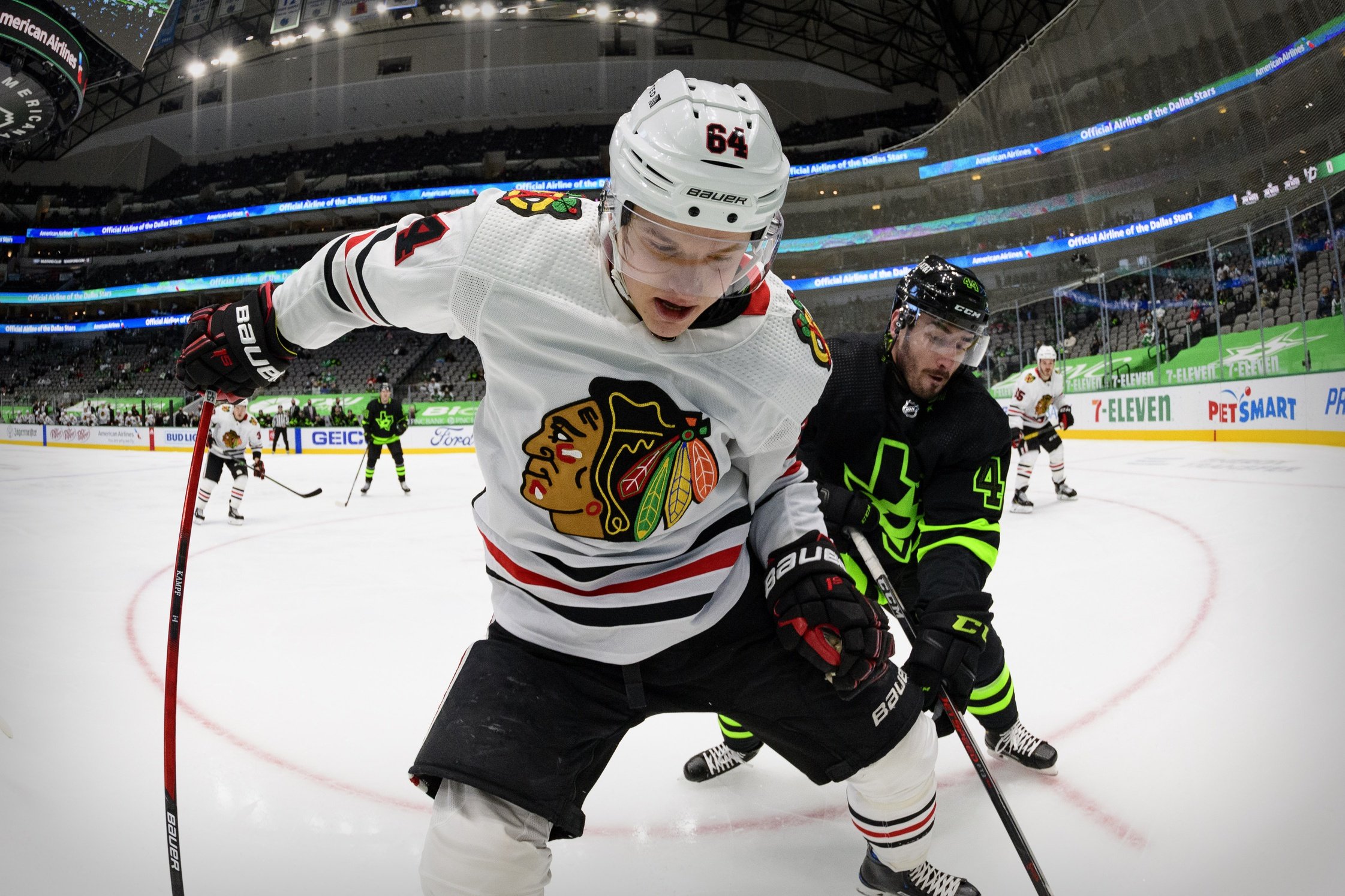
This is a bit of a conundrum. Alex Kerfoot struggled last season as the third line center but handled himself well alongside Tavares and Nylander on the left wing. He also played well at center beside Nylander in the playoffs. Maybe he just needs to play with a puck carrier such as Nylander, allowing him to use his speed to forecheck and create turnovers. He can easily be one of the two top-six left wingers, but whether he can adequately center a third line without a top player on his flank is a different question.
If it’s not Kerfoot at 3C, who are the other options? The Leafs gave Kampf a two-year, $1.5 million AAV contract and he is in fact a natural center. If it’s not Kerfoot, he seems to be the logical next man up. Kampf is good enough defensively, but can the Leafs use a player in that spot if he is only putting up 20 points over a full season? There is a certain level of productivity needed to justify the ice time, and 20 points is not it.
For some reason, Spezza is often mentioned in the center conversation, but he hasn’t been a full-time pivot for at least three seasons now. There isn’t much reason to believe he could suddenly shift back there at age 38 while his skating falls off. I don’t think the Leafs coaching staff is even remotely considering him as an option in this spot.
Pierre Engvall played 3C at times last season and can do it. The question with him — and it’s one Keefe seems keenly aware of based on his poking and prodding of the player — is which Engvall is showing up each night? When he’s on his game, Engvall is a good third-line center. When he’s not, he’s borderline unplayable.
Adam Brooks also flashed a little offensively. If the Leafs want to have an offensive third line, he’s certainly a candidate. Of all the options, he might actually have the highest offensive upside in this type of role. Can he handle the defensive responsibility of a third-line role (where he wouldn’t be nearly as sheltered as he was in the 4C spot alongside Spezza and Thornton)? Can he produce consistently enough to outweigh any lapses on the other side of the puck?
How will the forward group round out?
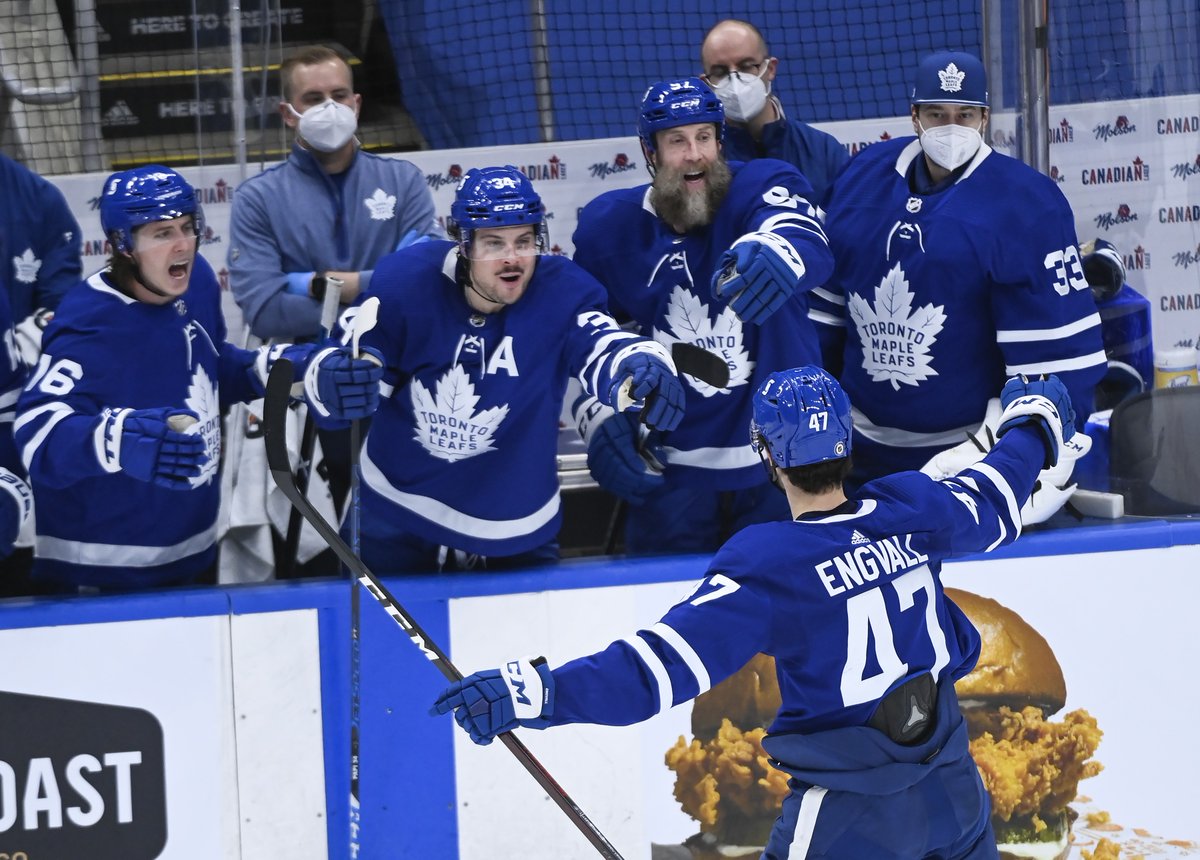
By my count, the players guaranteed to start game one of the season in the top 12 are (in no particular order):
- Matthews
- Tavares
- Marner
- Nylander
- Kerfoot
- Ritchie
- Mikheyev
- Kampf (they didn’t pay him 1.5×2 just to sit him)
- Spezza
The final three spots are anyone’s guess. Keefe has consistently sat Pierre Engvall, so while I’d like to think he can be a contributor as a checker and possibly a center, history has shown us that Keefe has no problem making him a healthy scratch.
Bunting is unproven, so while he will get a shot at some point, you can’t necessarily etch it in stone to start game one of the season.
As a respected veteran, Simmonds will likely get into the game one lineup based on pedigree alone, but you can also quite easily envision the team’s best possible lineup not including him (that said, a two-year contract with an NTC almost certainly guarantees Simmonds is playing in game one, if we’re being realistic).
Kase will be in there if he’s healthy, but I will not bet on that anytime soon given his history.
Gusev is on a PTO and has had some success in the league – given he’s competing against a number of players with inconsistent track records, it’s quite easy to see him making the team.
You also have Adam Brooks and Kurtis Gabriel in the mix. And then there’s Robertson, who is probably the biggest wildcard among the forwards. If he’s ready to play a full NHL season and contribute, the domino effect on the Leafs’ forward depth would be notable.
All in all, that’s eight players vying for the final three spots. This should be a good battle.
Will the top two pairings stay the same?

The Leafs were set-and-forget with their top four last season – Rielly paired with Brodie the whole time, as did Muzzin with Holl.
This year, they don’t have a veteran anchoring the third pairing. At some point, they have to start wondering about Muzzin’s injuries in the playoffs (two consecutive years of missing series-deciding games). Are they going to set the top four again and run with it, or are they going to move these pairings around at all?
Maybe an injury forces the team’s hand at some point during the season and they opt to keep the top four rolling as is. Maybe they get proactive and spread out the unit a little bit, trying out new combinations within the top four (Muzzin – Brodie, Rielly – Holl, for instance). Maybe they spread out the wealth among the entire top six, reuniting pairings in high-leverage situations (to close out periods, or in the final 10 minutes of a game, etc.).
Who wins the final spot in the top six on defense?

On defense, I’ll comfortably project that Rielly, Brodie, Muzzin, Holl, and Dermott are all locks to start the season. Perhaps the inclusion of Dermott might shock some, but he’s coming off of a quietly solid season and has now played over 200 games in the league. It would be unexpected to me if not one but two rookies completely bumped him out of the starting six.
That leaves Rasmus Sandin vs. Timothy Liljegren. On one hand, Sandin has the better pedigree and has played more in the NHL. On the other, the Leafs might like the handedness with the rightie Liljegren (and he has also been a good player in the AHL — I don’t want to take anything away from him there).
After Zach Bogosian departed, the Leafs left this open to competition (they also signed Alex Biega for depth), and it’s presumed the intention here is to give both young defensemen a real chance to crack the lineup. They will both play at some point. This one will be more about who seizes the opportunity when it’s presented.
This also bleeds into the previous point – it’s possible the Leafs want to pair up these young defensemen with veterans and decide to insulate them rather than having a kids pairing, even if they would be sheltered.
How will the goaltending tandem be managed?
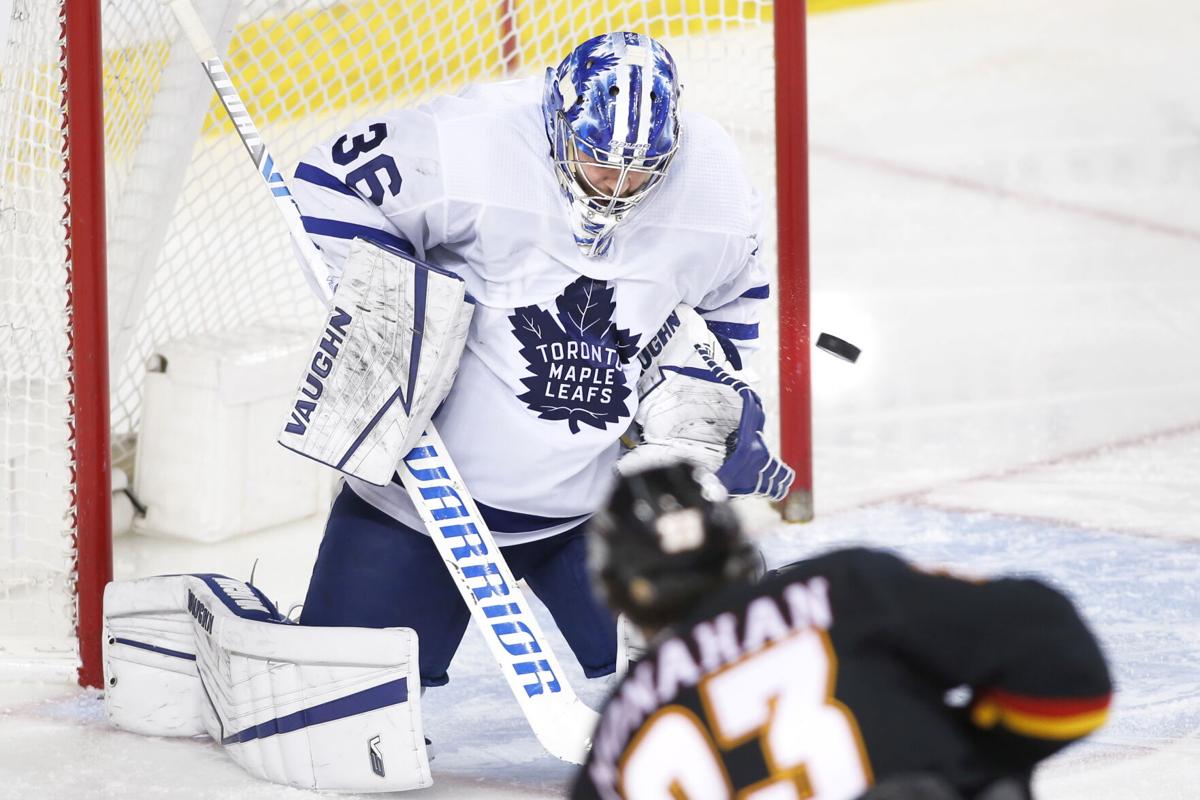
I’m really fascinated to see how this goaltending tandem plays out, particularly in this market.
Years ago, the Leafs ran a James Reimer and Jonathan Bernier tandem, which was actually a fairly reasonable duo on paper (in their first year together, the Leafs were 10th in 5v5 save percentage, although they dropped to 22nd in their second year). The whole time, there was a non-stop storyline around who should start and who was the better goalie.
Now, Petr Mrazek arrives in a fairly similar situation: brought in to split starts with an inexperienced goalie coming off a strong season and a good showing in the playoffs. Bernier was brought in to be the guy, and while I wouldn’t necessarily say the same about Mrazek, he is born in the same year as Campbell and is signed for the next three years. He’s not coming in to simply accept the back seat.
There are plenty of great examples of 1A/1B goalie tandems working – Mrazek himself just came from a situation like that! – but this is not Carolina. Who should start will be a story throughout the season.
How will the goalies handle it? How will Keefe manage it? Is there going to be a preference for giving the net to the goalie who performed really well last season, or the netminder signed to a fairly sizable three-year contract?




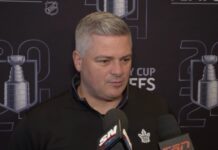




















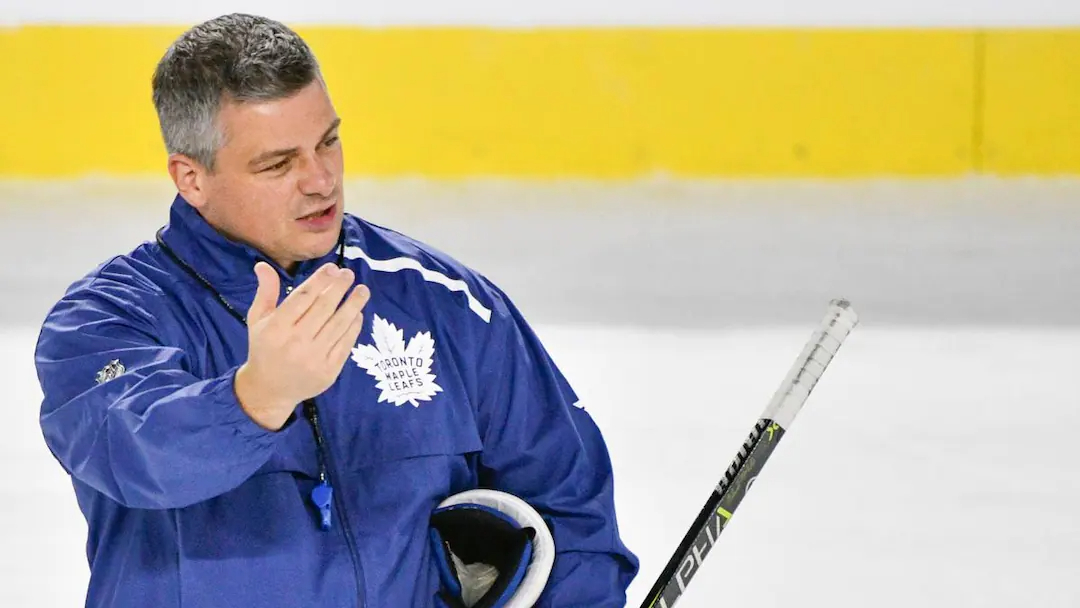
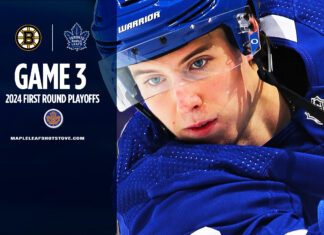






![Sheldon Keefe Post Game, Leafs 3 vs. Bruins 2: “I loved [the Matthews] line, and I loved a lot about our game all the way through the lineup” Sheldon Keefe, Toronto Maple Leafs post game](https://mapleleafshotstove.com/wp-content/uploads/2024/04/keefe-pg-game-1-100x70.jpg)

